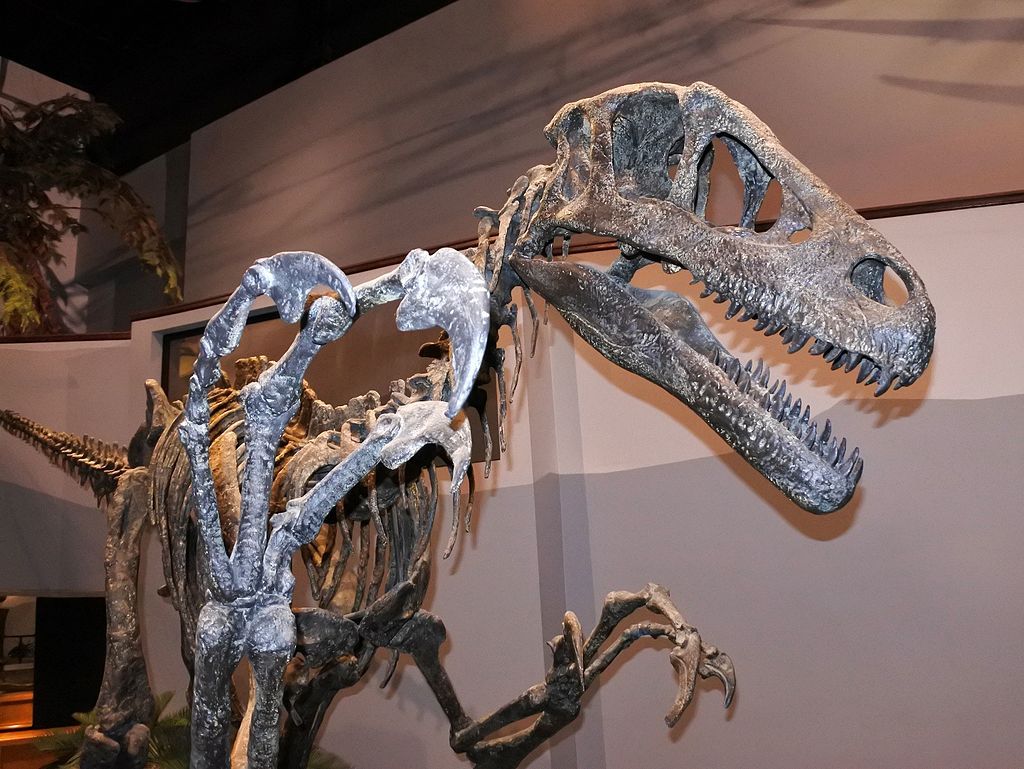FOR AGES 3 YEARS TO 18 YEARS
Nuthetes is a theropod dinosaur of the Early Cretaceous. The generic name is derived from the Koine Greek word 'nouthetes' which means 'a monitor' or 'the one who admonishes'. The name was in reference to the unusual teeth of the dinosaur that resembles the teeth of the present-day monitor lizard. The specific name Nuthetes destructor refers to the ability of the Nuthetes teeth to cut smaller animals. The animal was primarily known from the fossilized teeth and is considered to be a tooth taxon.
Nuthetes is pronounced as 'Nut-heet-eez'.
Nuthetes is a genus of theropod dinosaurs that evolved during the Early Cretaceous age. They belonged to the Eudromaeosauria clade of the Dromaeosauridae family and the subfamily Velociraptorinae.
Nuthetes was a dinosaur genus of the Cretaceous period. The discoveries suggest that the fossil reptilian remains of these velociraptorine dinosaurs date back to the Berriasian age.
It is unknown when exactly they became Extinct.
Nuthetes evolved in England. The fossils of the dinosaurs were excavated from the Lulworth Formation of England. They also possibly existed in France.
The species of the Nuthetes genus probably lived near freshwater habitats.
Nuthetes fossils were attributed to the formations of France and England. The number of remains in the formations may suggest that they lived in groups.
Their lifespan is unknown.
They were oviparous in nature.
The genus Nuthetes is known for a few jawbone fragments and fossil teeth which makes the exact identification of the dinosaur a bit difficult. No further details have been established regarding the dinosaur's physical description.

We've been unable to source an image of Nuthetes and have used an image of Utahraptor instead. If you are able to provide us with a royalty-free image of Nuthetes, we would be happy to credit you. Please contact us at [email protected].
They were known from very few remains including teeth and jaw fragments.
Similar to other dinosaurs, Nuthetes also communicated using vocalizations.
The length of the Nuthetes is estimated to be around 6.5 ft (2 m).
Nuthetes were small and aggressive predators, however, their speed is not known.
The weight of the Nuthetes is uncertain.
The male and female species were called Nuthetes collectively.
A baby Nuthetes is called a hatchling.
Nuthetes were carnivorous in nature.
Some teeth fragments of the Nuthetes were also discovered from the Angeac-Charente bonebed at western France.
Read The Disclaimer
At Kidadl we pride ourselves on offering families original ideas to make the most of time spent together at home or out and about, wherever you are in the world. We strive to recommend the very best things that are suggested by our community and are things we would do ourselves - our aim is to be the trusted friend to parents.
We try our very best, but cannot guarantee perfection. We will always aim to give you accurate information at the date of publication - however, information does change, so it’s important you do your own research, double-check and make the decision that is right for your family.
Kidadl provides inspiration to entertain and educate your children. We recognise that not all activities and ideas are appropriate and suitable for all children and families or in all circumstances. Our recommended activities are based on age but these are a guide. We recommend that these ideas are used as inspiration, that ideas are undertaken with appropriate adult supervision, and that each adult uses their own discretion and knowledge of their children to consider the safety and suitability.
Kidadl cannot accept liability for the execution of these ideas, and parental supervision is advised at all times, as safety is paramount. Anyone using the information provided by Kidadl does so at their own risk and we can not accept liability if things go wrong.
Kidadl is independent and to make our service free to you the reader we are supported by advertising.
We hope you love our recommendations for products and services! What we suggest is selected independently by the Kidadl team. If you purchase using the buy now button we may earn a small commission. This does not influence our choices. Please note: prices are correct and items are available at the time the article was published.
Kidadl has a number of affiliate partners that we work with including Amazon. Please note that Kidadl is a participant in the Amazon Services LLC Associates Program, an affiliate advertising program designed to provide a means for sites to earn advertising fees by advertising and linking to amazon.
We also link to other websites, but are not responsible for their content.
Was this article helpful?



We’ll send you tons of inspiration to help you find a hidden gem in your local area or plan a big day out.



Check your inbox for your latest news from us. You have subscribed to:
Remember that you can always manage your preferences or unsubscribe through the link at the foot of each newsletter.